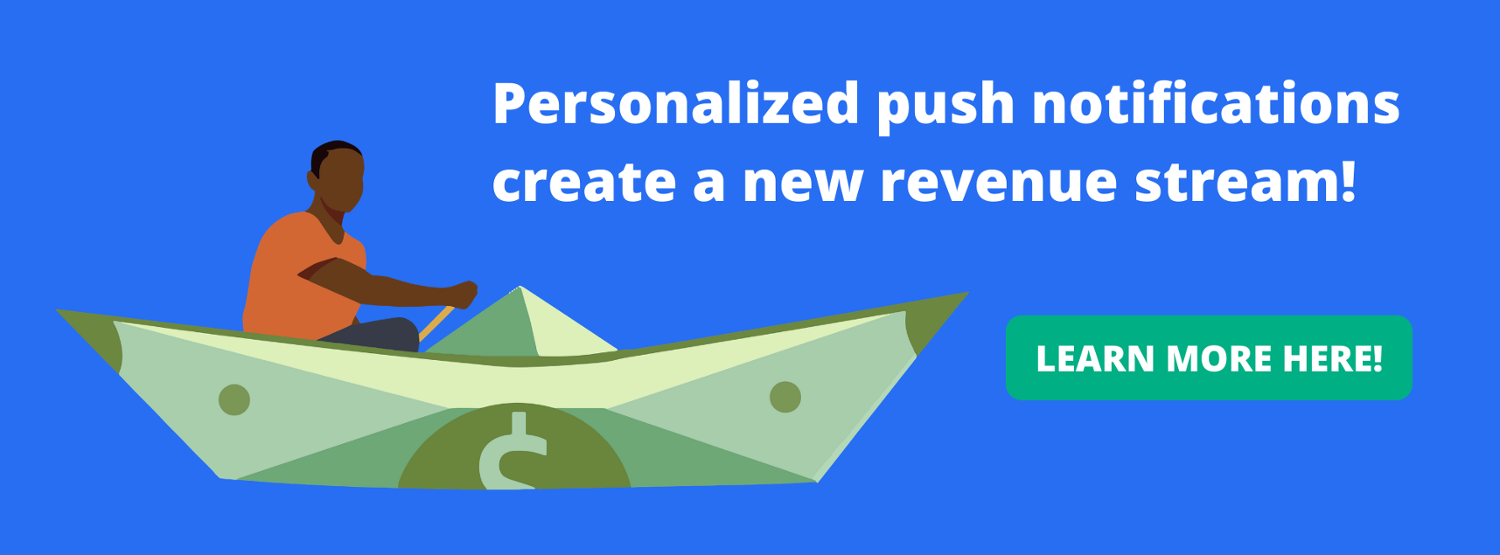Push notifications work. That’s no secret.
Over 70% of people have enabled these bite-sized, real-time alerts so they can get customized messages delivered right to their web browsers or mobile phones.
Jeeng also found that 87% of people find them useful for breaking news, 81% for location-based stories, and 58% for personalized ads. In fact, publishers have seen over 20% audience engagement with push notifications each month.
The question is: Do you have the right platform needed to drive these results for yourself and make the most of what push notifications have to offer?

To answer that, we have to look at the biggest key components of a comprehensive and effective push messaging platform. This way, publishers and advertisers know exactly what to look for when searching for the right solution.
With that in mind, here are the 7 most important components and capabilities of a push messaging platform.
1. Reaching the right audiences at the right time
Timing is critical in many areas of life — comedy, music, relationships — and also push notifications.
Actually, they’re baked into the format of push messages, which pop up on users’ devices with timely alerts about new content, breaking stories, special offers, and relevant recommendations. As Jeeng found in a recent survey, 53% of consumers want push notifications for breaking news in 2021 — up from 27% in 2020.
That’s why it’s crucial for your push notification service to be able to make data-informed decisions and launch content at the most engaging time for each audience — whether they’re in Europe or the U.S, on mobile apps or desktop browsers.
2. Automated, personalized content distribution
According to SmartInsights, 72% of consumers will only engage with personalized marketing content. Over 80% also want personalized content about new products. That’s where push notifications come in.
Publishers, for example, can send customized alerts about:
- Trending news stories in certain verticals
- Abandoned cart reminders for potential paying members
- Local news and weather updates
- Personalized subscription offerings
Still, that’s tough to do manually. The right push notification service will pull your own first-party data and real-time analytics about your audience preferences and behaviors, and use it to deliver automated, personalized notifications that match their interests. So you can distribute customized content at scale across devices and demographics.
3. Increased website traffic and engagement
Push notifications don’t exist in a vacuum. They can be clickable and act as a helpful vehicle for driving traffic back to your website. Meaning, unlike social media marketing, push marketing won’t lock your customers — and their data — inside a walled garden. It will give them the nudge they need to continue engaging with your content on-site and generating revenue for your business.
Take GoGy, a gaming platform with over 2,000 free online games available across devices. To grow its audience, the company looked beyond just using Google AdWords and started launching push notifications. With an automated solution, GoGy was able to easily send customized push notifications to a range of users from Israel to Las Vegas.
As a result, GoGy drove tens of thousands of users each day from its push notifications, generating low bounce rates and high session durations on its website.

4. Monetization opportunities for driving revenue
Publishers can take their push notification strategies one step further by monetizing these real-time alerts with ad placements. And for advertisers, this channel provides an opportunity to reach opt-in, targeted, engaged audiences with content that promises guaranteed impressions.
In fact, customers are already on board with this setup. Jeeng found that 47% of people are open to seeing push notification ads if those ads are personalized — up from just 19% last year.
With the right push notification service, publishers can add an entirely new revenue stream to their portfolio, helping them meet their bottom line while building direct audience relationships.
5. Support for web push notifications
There’s a difference between web push notifications and mobile push notifications. Mobile push notifications, for example, will pop up on a user’s mobile screen — at the top if they’re using it or directly to their home screen if they’re not using it. From there, people can tap through to an app. Meanwhile web push notifications will pop up in the corner of a person’s laptop or desktop screen, where they can then click through to a website or article.
Your push platform should support web browser-based messaging. A fashion publisher, for instance, can deliver web marketing messages linking to new beauty product demonstrations on its site. And a sports publisher can deliver marketing messages with score updates during a game.
6. The ability to sync campaigns across channels
Diversification is paramount in today’s digital world, where customers, publishers, and advertisers have tons of channels to choose from. The problem is that, once companies diversify, they’re stuck with siloed data and fragmented views of their customers.
That’s why it’s so important for push messaging platforms to sync campaigns and analytics across channels, like email, website ads, and newsreaders. This integration allows marketers to run multichannel campaigns that automatically reach customers on their favorite platforms.
7. User-friendliness and easy setups
While push notifications deliver rich and robust results, they should be simple to set and manage thanks to marketing automation. In fact, once you decide to use push messaging, all you should have to do is add one line of HTML code to your site, and you’ll be up and running.
From there, your push notification service should analyze your content and first-party customer data, create unique audience segments, and deliver personalized messages to the right people at the right time. It should also manage your campaigns for you, so you can optimize your strategies with A/B testing and advanced analytics without wasting your own time and resources.
Choosing the right push messaging platform
Jeeng is the only personalized, automated, monetized push notification platform that works both on mobile and in the browser. Plus it is built exclusively for publishers. Our full-service solution does all of the above, helping you increase clickthrough rates, revenue, and engagement across channels. And all it takes is one line of code to get started — so you can begin building those one-on-one connections.
Ready to set up your push marketing operation? Contact us to learn more.


